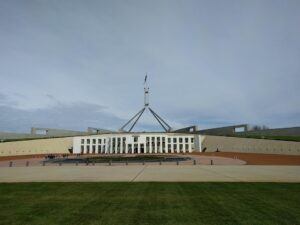
UPDATE: Australian government economists have issued a stark warning regarding the future of the country’s iron ore market, predicting a significant downturn as China’s steel production slows. New data from the Department of Industry, Science and Resources indicates that mining and energy receipts could fall by 5 percent, dropping from $385 billion in 2024-25 to $369 billion in 2025-26.
The report highlights a concerning trend, with iron ore prices forecasted to barely budge—projected at $86 per tonne in 2024-25, rising only slightly to $87 per tonne in 2025-26, before plummeting to $82 per tonne in 2026-27. Iron ore earnings are expected to decline from $113 billion in 2025-26 to $103 billion in 2026-27.
This downturn is largely attributed to an “abundant supply” stemming from Rio Tinto’s newly operational Simandou Mine in Guinea, alongside consistent outputs from the Pilbara, combined with a significant drop in steel demand from China. Officials report that since March, China has been attempting to curb steel production to manage overcapacity and prevent detrimental price wars.
Additionally, Chinese property investments saw an alarming decrease of 11.2 percent in the first half of 2025, leading to a 20 percent reduction in new project starts compared to the previous year. These factors contribute to the bearish outlook for Australia’s iron ore sector.
Despite these challenges, Pilbara miners are maintaining strong export levels, with expectations of shipping out 918 million tonnes in 2025-26 and 926 million tonnes in 2026-27. Interestingly, iron ore exploration has surged by 11 percent year-on-year as major companies seek to optimize operations amid declining ore grades.
In contrast, the gold market is experiencing a strong upswing. Earnings from gold are projected to soar to $60 billion in 2025-26, a significant increase from $47 billion in the previous year. This surge is particularly noteworthy as gold prices recently hit a record high of $3,920.63 per ounce. Economists predict a slight decline in gold prices into 2026-27, averaging $3,321 per ounce.
Federal Resources Minister Madeleine King emphasized the importance of gold mining for Australia’s economy, stating, “Gold has helped build this nation and continues to create wealth and jobs.”
Meanwhile, the outlook for the lithium market remains bleak, with export earnings expected to rise from $4.8 billion in 2024-25 to $6.1 billion the following year, as more lithium hydroxide—an essential ingredient for battery production—enters the market.
With these developments, it is clear that Australia’s resources sector faces a challenging road ahead. Stakeholders are urged to remain vigilant as the situation unfolds, particularly regarding the iron ore market’s dependency on Chinese demand and the impacts of global economic trends.





